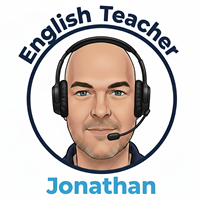It's interesting to think about how you approach vocabulary when students are working on texts…
LESSON IDEAS #3: THE LEARNER SPOTLIGHT IDEA
3.
LESSON IDEAS #3: THE LEARNER SPOTLIGHT IDEA
Sometimes in a lesson you will notice that a learner has a story to tell about something. There was one occasion when I overheard a learner explaining to his partner that he had witnessed a shooting when visiting New York. And I shouted “OK. Everybody stop!”
The reason I did this was because I knew we had a spotlight moment – a student had something to say that was worth exploring with the whole class. So I turned this into a spotlight moment. This is how it works.
1 Tell students they are going to focus on a story that one learner has to tell. Explain who it is and the gist of the story.
2 Tell that student to start things off by telling their story. Let that roll on until it naturally ends.
3 Next, tell the audience that everybody must now ask one question. Hold up your hand(s) to show you are counting off the questions. Keep going until everyone has asked. Include yourself in asking questions. Repeat if the story is particuarly rich.
4 Have a retelling phrase. Get students to work in pairs to retell the story using as much of the new information garnered from questions as possible. Ask the student with the story to check the accuracy of his/her story as it’s being retold to them.
5 Do a writing phase. Get students to write a version of story as a news report. Get students to exchange written work and do evaluation.
I think what makes the activity powerful and interesting is specifically thinking of this as a spotlight moment which takes a complete detour from whatever the main lesson activity was. It’s natural, it’s spontaneous and it always generates huge amounts of emergent language.
But don’t make the mistake of thinking that a “story” has to be dramatic on the level of a kidnapping or a safari. “Mundane” things can also work brilliantly such as finding out that a student lives on a farm or that their Mum has a Tesla or they have a pet lizard.
When you start doing this kind of activity you end up thinking it’s what teaching and learning should always look like.



Comments (0)